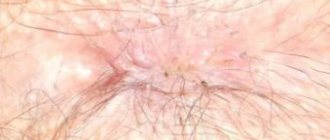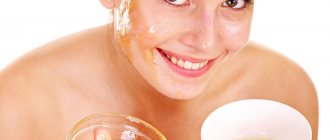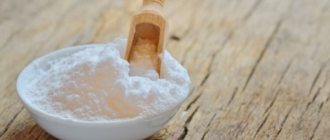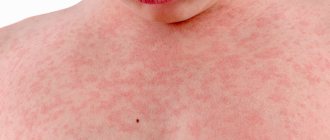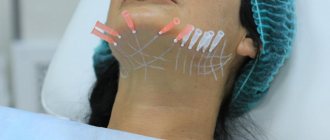The appearance of contaminated areas of the skin is perceived by many as a violation of personal hygiene rules. However, the reasons for dark skin on the elbows are not always associated with sloppiness. Often such changes indicate certain pathologies in the body.
It is not always easy to determine why you encounter such signs on your own. Therefore, a person must undergo a comprehensive examination. This needs to be done as soon as possible, since many of the problems are very serious.
Impact of physical factors
Dark skin on the elbows may be a purely cosmetic defect. It often forms due to increased friction of the skin on clothing. Also, the bends of the arms most often come into contact with hard surfaces, such as a table. This leads to a roughening of the tissues and a change in their shade.
Symptoms can also be observed if hygiene rules are not followed. In this case, the elbows begin to become covered with a crust that is difficult to remove. It is important to take a shower on time and wash off dirt from your skin.
If the skin has darkened for no reason, then a dermatologist should determine the disorder in the body. Often changes indicate the development of serious pathologies.
How to whiten elbows at home quickly?
There are many traditional medicine recipes that will give you the opportunity to quickly and effectively get rid of the problem using simple and inexpensive means. Today the most common of them are:
Lemon
For these purposes, you can use either lemon itself or lemon juice as one of the ingredients in self-prepared skin care products. Remember that the procedure will be more effective if, before using these products, steam your skin in the shower and thoroughly rub the folds of your arms with a scrub.
One of the simplest and fastest ways to whiten elbows is to apply lemon slices to rough skin, securing them with plastic film. After half an hour, such a compress can be removed and, without washing off the lemon juice, lubricate the skin with a rich cream.
Also, in the fight against this phenomenon, masks and wiping dark places on the skin based on lemon juice have proven themselves to be effective:
- a mask of oatmeal, lemon juice and milk in equal proportions;
- mask of vitamin E, glycerin, lemon juice, taken one teaspoon and 4 tbsp. spoons of milk;
- rubbing the skin with a product that contains 1 teaspoon of lemon juice and 2 tbsp. spoons of rose water.
Potato
Masks and potato-based compresses also work well to combat the problem of darkening and roughening of the skin on the folds of the arms. In this case, both raw and boiled potatoes can be used. It will not only lighten, but also soften the skin well. Most popular recipes:
- secure raw grated potatoes on your elbows with polyethylene and leave the compress overnight (alternatively, you can wipe the rough and darkened skin with potato juice several times during the day);
- Grind boiled potatoes with honey and vegetable oil or milk, apply the mixture to the elbow and secure with a bandage or polyethylene.
Other ways to get rid of the problem
You can try other simple remedies to combat rough skin on the folds of your arms. This:
- the pulp of black bread dipped in warm milk;
- decoction of oatmeal;
- coffee grounds;
- linseed oil compresses;
- rubbing the skin with aloe juice, cucumber juice or hydrogen peroxide;
- lotions made from apple cider vinegar diluted with water.
Lack of vitamins
Darkening of the skin on the elbows may be due to a lack of vitamins in the body. The deficiency of elements of groups B, A, E, C is especially acute.
In most cases, pathology appears in the spring. But with an incorrectly composed diet, as well as a lack of nutrients, vitamin deficiency is detected at any time of the year.
A doctor can determine the causes of darkening of the skin on the elbows after an examination.
To eliminate such violations, it is important to remember three important rules:
- It is imperative to take multivitamin tablets. They will help replenish the supply of missing substances.
- The diet is being adjusted. It should include products with vitamins A, which is found in liver, dried apricots, carrots, E, which comes from vegetable oil, eggs and sea fish, as well as C, contained in greens, citrus fruits, rose hips, and black currants.
- Special skin care is required.
Why does it become dry?
There are many factors that can affect dry skin on your elbows. All of them can be generally divided into:
- Natural.
- Pathological - caused by various health problems. The skin on the elbows can become rough due to dermatological problems, as well as due to internal disorders - diseases of internal organs and systems.
Sometimes dealing with dry and flaky skin on the elbows is not at all difficult: you just need to change your daily habits and start properly caring for the epidermis. But in some situations, only a doctor can identify the exact cause of roughness and correct it.
Natural causes
Perhaps the most common cause of increased dryness of the elbows and flaking of the skin on them is regular stress on such areas of the body. This is most typical for people who spend hours working on a computer. But in addition, elbows can become rough when:
- Natural aging processes.
- Having bad habits.
- Regular stress and emotional overstrain.
- Wearing tight and, especially, synthetic clothing.
- Lack of fluid in the body and/or excessive dryness of the environment.
It is worth noting that the listed factors can affect not only the skin on the elbows, but also the epidermis on other parts of the body.
The problem can be aggravated by poor nutrition, regular washing under chlorinated water, and temperature changes. However, the listed causes of dryness can be corrected at home.
Dermatological problems
Sometimes the appearance of roughness and peeling on the elbows is the first sign of dermatological diseases. Such symptoms may manifest themselves:
- Fungal diseases, in particular lichen. At the same time, the skin may also be somewhat itchy and red.
- Dermatitis. This is an inflammatory skin disease that can be triggered by a variety of factors, such as allergies. The disease can manifest itself on the elbows, making itself felt by drying out, cracking, itching and redness. The disease usually affects the condition of the epidermis in other parts of the body.
- Psoriasis. This is a fairly common dermatological disease, which is characterized by a chronic course. With this disease, inflammatory rashes appear on the skin, covered with many silvery scales. If you try to remove them, a bright pink surface will be exposed underneath, with small droplets of blood appearing on them.
The appearance of signs of dermatological diseases is a serious reason for an early consultation with a dermatologist. Timely diagnosis and proper treatment helps avoid progression of the disease.
Diseases of internal organs
The skin on the elbows may become dry when:
- Hypovitaminosis is a lack of provitamin A, vitamins E and D, etc. In this case, a person may notice the appearance of itching, dryness and cracks on the feet, as well as on other areas of the skin.
- Disturbances in the functioning of the endocrine system. Such diseases usually make themselves felt by a variety of health problems, including changes in body weight, irregular menstrual cycle, emotional swings, etc.
- Failures of metabolic processes of various etiologies. Similar problems can also be manifested by obesity, disorders of the gastrointestinal tract, etc.
- Iron deficiency anemia. With such a disorder, the patient is also worried about noticeable weakness, loss of strength, pallor, brittle nails and hair, etc.
- Chronic kidney problems. Such disorders can be suspected by reduced urine production, swelling and shortness of breath. Patients may also complain of disturbances in normal night rest, loss of appetite, increased blood pressure, etc.
- Various types of allergies. Even a mild allergy, which is not accompanied by severe disturbances in well-being, can make itself felt by various changes in the condition of the skin. Most often, the disease causes peeling, rashes, and redness. These areas of skin may itch and cause discomfort.
You should not ignore obvious health problems, even if they cause a mild disturbance of well-being. Timely seeking medical help will help avoid extremely undesirable consequences.
Dark spots: a sign of what disease?
Sometimes dry skin on the elbows becomes rough and takes on an extremely unpleasant “dirty” coloration. Such black spots on the body have nothing to do with compliance or non-compliance with hygiene; the reason for their appearance may lie in various endocrine diseases:
- Hypothyroidism. With this disease, the thyroid gland produces an insufficient amount of hormones, which disrupts the overall well-being of a person. Hypothyroidism can manifest itself as lethargy, slowness, decreased performance, a feeling of constant chilliness, and fatigue. Hormones affect the condition of the skin, cause brittle nails and hair loss. Possible weight gain.
- Diseases of the adrenal glands, in particular chronic adrenal insufficiency. With this disease, the adrenal glands produce insufficient amounts of hormones, which leads to metabolic disorders and an imbalance of water and salts in the body. The disease can make itself felt by increased pigmentation in open areas of the body and areas of friction of the skin and clothing, as well as progressive weakness and increasing fatigue. Possible weight loss, weight loss, hypotension, dizziness, fainting, disturbances in the gastrointestinal tract, etc.
- Diabetes mellitus. This disease can also cause the appearance of specific dark spots on the skin of the elbows. The disease is also manifested by increased thirst, frequent urination, constant hunger and weight loss. Itching of the skin, muscle weakness, dry mouth, etc. may occur.
Dark spots on the elbows may well appear due to natural causes, in particular, increased stress on these areas of the body. But sometimes such a symptom warns of quite serious health problems.
Why does the child’s skin turn dark and peel?
In children, peeling and darkening of the skin on the elbows is most often a consequence of allergization of the body. In particular, with atopic dermatitis, the epidermis in some areas of the body may become rough to the touch and darken over time. If the allergen continues to enter the body, rashes and weeping may appear on the skin. Sometimes dry skin on the elbows of children is observed with:
- Insufficient care of these areas. In particular, parents of infants often forget to lubricate the baby’s elbows with cream. And if the baby learns to roll over, sit up or crawl, it is the elbows and knees that may suffer from this. The skin can even become dry due to friction from bedding and diapers.
- Low hemoglobin levels. Also, with this problem, the child may experience pallor of the skin and blueness of the nasolabial triangle.
- Depriving. In children of preschool and primary school age, this dermatological disease is quite common; a doctor will help to identify and treat it.
If organizing proper care for your child’s elbows does not in any way affect their condition within a week, you should definitely seek medical help from a dermatologist.
White spots: what are they?
White spots on the elbows are found quite rarely. The reason for their occurrence may lie in:
- Development of psoriasis. With this disease, a spot forms on the skin, covered with many whitish scales. The disease causes discomfort and is prone to progression.
- Vitiligo. This disease is accompanied by a pigmentation disorder - the complete disappearance of the coloring pigment melanin in some areas of the skin. The disease does not pose a threat to health and does not cause any health problems. Stains in this case are only a cosmetic defect.
Psoriasis requires targeted and comprehensive treatment under the supervision of a doctor. As for vitiligo, today there is not a single effective method of treating such a disease.
Why did peeling appear on the hands above?
Peeling of the skin from the elbow to the shoulder can also be explained by the natural and pathological factors already listed above, but sometimes the cause of the rough epidermis in this area is follicular hyperkeratosis. This is a very common dermatological ailment in which the skin becomes quite rough and dry to the touch, and if you look closely, small bright red, slightly rough nodules will be visible on it. The cause of this condition is blockage of the follicle ducts with horny scales, which leads to its inflammation. Such a violation can be provoked by:
- Vitamin A deficiency.
- Lack of vitamin C.
- Hereditary predisposition.
- Allergy of the body.
Follicular hyperkeratosis does not pose a potential threat to the human body, however, it becomes a visible cosmetic defect. It is worth noting that the disease can worsen when attempting self-therapy, so it is better to treat it under the supervision of a doctor.
Dysbacteriosis
Disruption of the gastrointestinal tract is often characterized by the manifestation of dysbacteriosis. In this case, various changes may appear on the surface of the skin in the form of rashes, pimples and inflammation.
The elbow parts often suffer from problems. Symptoms are especially acute as a result of dysbiosis associated with taking antibiotics and hormonal drugs. Imbalance can also be caused by poor nutrition and stressful situations.
Abnormalities may reflect improper functioning of the gastrointestinal tract
A person needs to normalize his lifestyle, diet, giving up diets. You also need to inform your doctor about the medications you are taking.
Prevention of dryness and black rough spots on the elbows
To prevent the problem in question from occurring or to bring rough and dark elbows back to normal even faster, follow these recommendations:
- Drink plenty of fluids throughout the day. This way you will provide the necessary hydration to the skin from the inside;
- humidify the air at home. It is especially important to do this during the heating season;
- reduce the frequency of taking hot baths. Use a warm shower instead;
- try to avoid contact of dry and rough elbows with soap;
- take multivitamin complexes;
- do not use cosmetics that contain irritating components;
- take care of damaged elbow skin using pharmaceutical anti-inflammatory creams.
Also, for prevention, you can lubricate your elbows daily with a moisturizing oil, for example, grape seed oil, olive oil or black cumin seed oil.
The listed oils have an anti-inflammatory and moisturizing effect, promoting active regeneration of the skin.
Additionally, you can make compresses from warm honey and baths from heated milk.
Psoriasis
Among the common reasons why the skin on the elbows is dark is the development of psoriasis. The disease is characterized by changes in the structure and shade of the integument.
If an infectious form develops, the areas where large joints are located are affected. Therefore, there are signs of impairment in the knees and elbows.
Psoriasis is difficult to treat, so only dulling of symptoms is possible
A dermatologist will make the correct diagnosis without much difficulty. Psoriasis is difficult to treat, so well-chosen therapy will be required. It is important to remember that it is not possible to completely cure the pathology. A doctor can only reduce the signs of psoriasis.
Treatment for rough elbow skin
When deciding what to do about dry and dark skin on your elbows, you may want to consult a dermatologist. He will prescribe medications that restore the skin. Depending on the individual situation, these drugs may be:
- Anti-flaking ointments: zinc, salicylic, with birch tar.
- Moisturizing and antiallergic creams: Gistan, Boro Plus, La-Cri.
- Vitamin creams: Aevit, Bepanten.
- Vitamin complexes: Centrum, Complivit, Duovit.
- Antihistamines: Suprastinex, Claritin, Zodak.
- Medicines with iron: Ferrum-lek, Sorbifer.
When carrying out home treatment with medications, it is necessary to take into account all the doctor’s recommendations. If another negative reaction appears on the skin, inform a specialist without canceling the product yourself. Dosage adjustments or drug changes may be necessary.
Diabetes
Blackened skin in the elbow area may indicate the development of diabetes.
We also recommend reading: Why does a rash appear on my elbows?
The disease manifests itself in disruption of nutritional cellular processes.
Due to the lack of useful elements, fabrics become thin and dry.
Unfavorable changes can lead to the fact that even the slightest negative external influence injures the skin.
As a result, it darkens in the area of the elbows, palms, and heels.
Due to the penetration of infection, an inflammatory process develops.
The pathology is accompanied not only by dryness and flaking, but also by severe itching of the skin.
Endocrine disorders
Hormonal changes can be observed during a certain period of a person’s life. Adolescents, pregnant women and women who have entered menopause suffer from disorders. At this time, the thyroid gland and genital organs are not working properly.
Hormonal levels can also change under the influence of stress. With constant psychological overload, the body does not properly produce active substances.
With diabetes, in addition to darkening, pain and itching in the affected areas can be observed.
All changes are reflected in the condition of the skin. Therefore, pigmented areas form in people and the skin thickens. During this period, elbows and knees may darken.
With hypothyroidism, metabolic processes slow down. This leads to darkening and roughness of the skin. Therefore, when such signs occur, doctors first check the level of hormones in the body.
Types of rashes in children
In dermatology, there are three huge groups into which all possible skin rashes in babies are divided:
- Physiological. This type of rash occurs in newborns. Rashes appear on the body as a result of hormonal changes occurring in the body.
- Immunological. It is a consequence of the action of various irritating causes on the epidermis, for example, allergens, temperature or friction. These rashes include urticaria, prickly heat, an allergic reaction or atopic dermatitis. Violation of simple hygiene rules can also lead to unnecessary manifestations.
- Infectious. A rash is a symptom that accompanies a certain infectious (viral) disease, for example, chicken pox or scarlet fever (for more details, see the article: how an infectious rash is treated ( pathological elements on the skin and mucous membranes that differ from normal skin (mucous membrane) in color, texture, external species
) in children with viral exanthema?).
